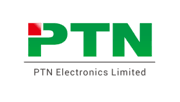The SDVoE Alliance, a nonprofit consortium of technology providers collaborating to standardize the adoption of Ethernet to transport AV signals in professional AV environments, announces PTN has joined the SDVoE Alliance as an adopting member.

PTN Electronics is a contract manufacturer that has been focused on Pro AV engineering and manufacturing since the year 2008. Empowered by the latest technologies, PTN provides OEM and ODM services supported by its strong engineering team, SMT production lines, and metal production lines. Originating in Shenzhen, PTN has a factory in a TAA country and customer service located in the United States. “Customer satisfaction is our core pursuit.”
[Wyrestorm Now a Contributing Member of SDVoE Alliance]
“We are pleased to welcome PTN Electronics to the SDVoE Ecosystem and look forward to their participation in the SDVoE Alliance community,” said Justin Kennington, president of the SDVoE Alliance.
“IP Streaming no doubt has a bright future and lots of applications, and SDVoE is so far the best IP technology I’ve ever seen—no delay, no compression," said Byron Tu, general manager. "We have assisted customers with large installations with a few hundred endpoints thanks to its video wall and multiview functions.”
[Xyte, SDVoE Alliance Announce Partnership]
In recent years, industry demands for remote data collection and real-time content management have dramatically increased AV-over-IP applications. AV-over-IP technology supports high-quality audio/video transmission over long distances without latency, making it ideal for content streaming applications. All AV distribution and processing applications that demand zero-latency and uncompromised video can benefit from SDVoE technology, which provides an end-to-end hardware and software platform for AV extension, switching, processing, and control through advanced chipset technology, common control APIs, and interoperability. SDVoE network architectures are based on off-the-shelf Ethernet switches, thus offering substantial cost savings and greater system flexibility and scalability over traditional approaches, such as point-to-point extension and circuit-based AV matrix switching.
